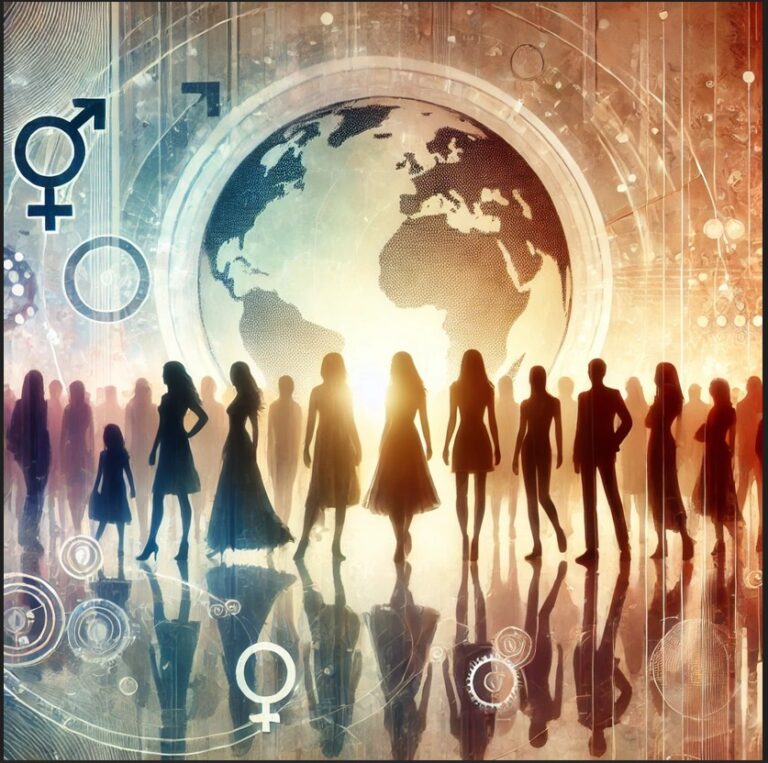Breaking the Cycle

Introduction to Our Blog Series: Matriarchy to Patriarchy – The Gendered Roots of Power & Poverty
As we launch the first part of our blog series, we begin with an article originally written for Women on Boards CIC, an organization actively engaged with UN Women UK and CSW. This piece sets the foundation for our exploration of historical gender dynamics and their lasting impact on power structures and poverty.
I have the privilege of serving as the Vice-Chair of the Education Committee at Women on Boards CIC, an organization dedicated to empowering women in leadership and decision-making roles. Through our work, we advocate for greater representation, equity and opportunities for women in governance and leadership across industries.
This article examines the historical transition from matriarchy to patriarchy and the way it has shaped women’s roles, leadership and economic standing throughout history. It serves as an introduction to the key themes we will explore throughout this series:
- How did matriarchal societies function and why did they decline?
- What structural changes led to the dominance of patriarchal systems?
- How has this shift contributed to persistent gender inequalities and economic disparities?
- What strategies can we use today to break the cycle and create systemic change?
This research is not just an academic discussion—it is a call to action. Understanding the past helps us shape the future and we invite you to be part of this conversation.
Stay tuned for the upcoming parts of this series, where we will continue to explore the intersection of gender, power and poverty and its relevance to modern society.
=========================================================================================================
Breaking the Cycle: Regaining the Influence of the Feminine
According to the Oxford English Dictionary (OED), a cycle is “a series of events that are regularly repeated in the same order.” This definition emphasises repetition and predictability, concepts that can be applied to societal, historical and natural patterns. Established cycles include historical cycle theory, industrial and production cycles and natural cycles such as annual and solar cycles.
In the context of societal roles, we ask: Is the role of women cyclical? If so, can this cycle be interrupted or transformed?
Matriarchy
Matriarchy refers to the early societal structure (7000–3500 BC) where kinship was traced through the maternal line. Early matriarchy was characterised by gender equality, with men and women sharing responsibilities. Later, during developed matriarchy, women gained a more dominant role in social and economic life due to their increasing contributions.
There are two interpretations of matriarchy:
- A system where women dominate men.
- A harmonious, mutual society distinct from patriarchy, characterised by inclusivity and cooperation rather than dominance.
Archaeological evidence suggests early societies embraced harmony and relational balance. However, resource depletion and conflicts led to militarised expeditions, fostering a shift toward patriarchal systems. This marked the decline of matriarchy as male dominance became the norm (Gimbutas, 1982).
Patriarchy
Patriarchy replaced matriarchy with a hierarchical order where men dominated all aspects of life, including family, religion and economics. This shift coincided with the rise of agriculture and private property, which concentrated wealth and power in male hands. Over centuries, patriarchy was reinforced by societal norms and religious doctrines, relegating women to reproductive roles while men assumed authority and leadership.
Rigid roles and expectations under patriarchy created structures that persist today, limiting women’s opportunities and reinforcing inequality.
The Cycle of Gender Roles
History reveals alternating systems that either empower or suppress women. Matriarchy celebrated harmony and inclusivity, while patriarchy-imposed division and hierarchy. The key question is: can this cycle be broken?
Breaking the Cycle
To disrupt this cycle, systemic changes are essential:
- Education: Empower girls with knowledge, confidence and leadership skills.
- Policy Change: Promote gender equality through legislation.
- Representation: Increase women’s visibility in leadership to inspire future generations.
- Cultural Shift: Challenge stereotypes and societal norms that reinforce traditional roles.
The cycles of matriarchy and patriarchy offer insights into societal evolution. Breaking the cycle is about more than addressing past injustices; it is about building a future where all individuals, regardless of gender, can thrive in an equitable and inclusive society.
Now is the time to take action for a fair and equitable future!
Written by: Isabela and S.I.T.
NB. You can read this article on this links as well: https://www.womenonboardscic.com/post/isabelatatu
